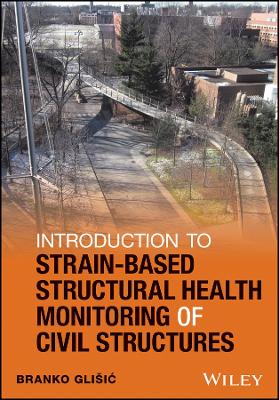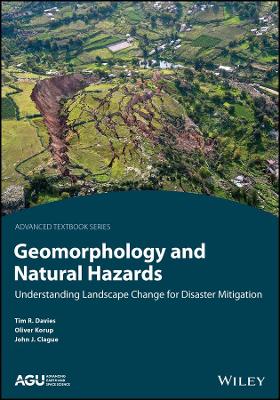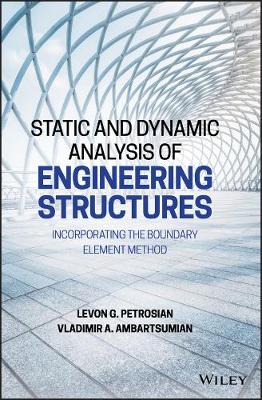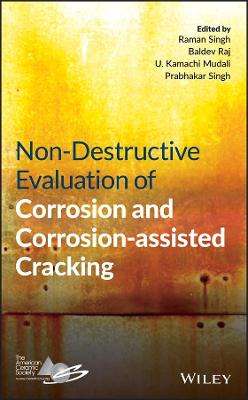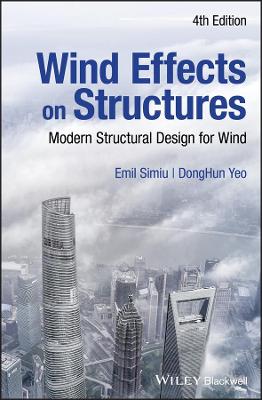Geosynthetic Reinforced Soil (GRS) Walls
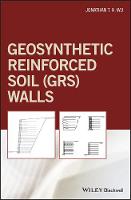 -15%
portes grátis
-15%
portes grátis
Geosynthetic Reinforced Soil (GRS) Walls
Wu, Jonathan T. H.
John Wiley and Sons Ltd
07/2019
416
Dura
Inglês
9781119375845
15 a 20 dias
870
1 Stresses and Shear Strength of Soils 1
1.1 Stress at a Point 1
1.1.1 Stress Vector 2
1.1.2 Cauchy Formula 3
1.1.3 Mohr Circle of Stress 6
1.1.4 Pole of Mohr Circle 7
1.2 Concept of Effective Stress 13
1.3 Mohr-Coulomb Failure Criterion 14
1.4 Shear Strength Tests 15
1.4.1 Direct Shear Test 16
1.4.2 Triaxial Test 17
1.4.3 Plane-Strain Test 28
1.4.4 Vane Shear Test 29
1.4.5 Standard Penetration Test 30
1.4.6 Cone Penetration Test 33
1.4.7 Plate Load Test 35
1.5 Design Considerations 37
1.5.1 Shear Strength of Granular Soils 37
1.5.2 Shear Strength of Clays 43
1.5.3 Shear Strength of Silts 55
References 55
2 Lateral Earth Pressure and Rigid Earth Retaining Walls 59
2.1 At-Rest Earth Pressure 60
2.2 Rankine Analysis 64
2.2.1 Active and Passive Conditions and Graphical Solution 64
2.2.2 Mathematical Solution 66
2.2.3 Failure Surface 72
2.2.4 Inclined Crest and/or Inclined Surcharge 73
2.2.5 Influence of Submergence 77
2.2.6 External Loads on Wall Crest 78
2.2.7 Applicability of Rankine Analysis 80
2.3 Coulomb Analysis 83
2.3.1 Active Condition 84
2.3.2 Passive Condition 91
2.3.3 Influence of Submergence 93
2.3.4 Influence of Seepage 94
2.3.5 Influence of Relative Wall Movement 100
2.3.6 Influence of Seismic Force 102
2.4 Rankine Analysis versus Coulomb Analysis 107
2.5 Additional Topics Regarding the Design of Rigid Retaining Walls 110
2.5.1 Common Proportions of Rigid Retaining Walls 112
2.5.2 Design Charts for Estimation of Active Force 113
2.5.3 Equivalent Fluid Density 113
2.5.4 Compaction-Induced Stress 116
2.5.5 Evaluation of Wall Stability 117
2.5.6 Selection of Shear Strength Parameters in Design 119
References 120
3 Reinforced Soil and Geosynthetic Reinforced Soil (GRS) Walls 123
3.1 Reinforced Soil and GRS 124
3.2 Field-Scale Experiments of GRS 129
3.2.1 "Mini Pier" Experiments (Adams et al., 2002, 2007) 129
3.2.2 Unconfined Compression Experiments (Elton and Patawaran, 2005) 131
3.2.3 Generic Soil-Geosynthetic Composite Plane-Strain Experiments (Wu et al., 2010, 2013) 132
3.3 Reinforcing Mechanisms of GRS Walls 136
3.3.1 Mechanisms of Apparent Confining Pressure and Apparent Cohesion 137
3.3.2 Mechanism of Suppression of Soil Dilation 143
3.3.3 Other Reinforcing Mechanisms 146
3.4 Geosynthetic Reinforced Soil (GRS) Walls 152
3.4.1 Wrapped-Face GRS Wall 152
3.4.2 Concrete Block GRS Wall 156
3.4.3 Cast-in-Place Full-Height Facing GRS Wall 160
3.4.4 Precast Full-Height Panel Facing GRS Wall 164
3.4.5 Timber Facing GRS Wall 165
3.4.6 Other Types of GRS Walls 169
3.5 Advantages and Disadvantages of Different Types of GRS Walls 173
3.5.1 Wrapped-Face GRS Walls 173
3.5.2 Concrete Block GRS Walls 175
3.5.3 Timber Facing GRS Walls 176
References 177
4 Geosynthetics Reinforcement 181
4.1 Geosynthetics as Reinforcement 181
4.1.1 Geotextiles 183
4.1.2 Geogrids 187
4.1.3 Geocells 188
4.1.4 Geocomposites 189
4.1.5 Description of Geosynthetics 190
4.1.6 Costs 191
4.2 Mechanical and Hydraulic Properties of Geosynthetics 191
4.2.1 Load-Deformation Properties of Geosynthetics 191
4.2.2 Creep of Geosynthetics and Soil-Geosynthetic Composites 201
4.2.3 Stress Relaxation of Geosynthetics 211
4.2.4 Soil-Geosynthetic Interface Properties 218
4.2.5 Hydraulic Properties of Geosynthetics 223
4.3 Advantages and Disadvantages of Geosynthetics as Reinforcement 224
References 226
5 Design of Geosynthetic Reinforced Soil (GRS) Walls 231
5.1 Fundamental Design Concepts 232
5.2 Overview of Design Methods 235
5.3 Recent Advances in the Design of GRS Walls 241
5.3.1 Required Reinforcement Stiffness and Strength 242
5.3.2 Evaluation of Pullout Stability 246
5.3.3 Lateral Movement of Wall Face 249
5.3.4 Required Long-Term Strength of Geosynthetic Reinforcement 252
5.3.5 Connection Stability of Concrete Block Facing 255
5.3.6 Required Reinforcement Length 261
5.4 The U.S. Forest Service (USFS) Design Method 266
5.4.1 Design Procedure: The U.S. Forest Service Method 266
5.4.2 Design Example: The U.S. Forest Service Method 271
5.5 The AASHTO Allowable Stress Design (ASD) Method 276
5.5.1 Design Procedure: The AASHTO ASD Method 277
5.5.2 Design Example: The AASHTO ASD Method 283
5.6 The NCHRP Design Method for GRS Bridge Abutments 287
5.6.1 Design Procedure: The NCHRP Method for GRS Abutments 288
5.6.2 Design Example: The NCHRP Method for GRS Abutments 298
5.7 The GRS Non-Load-Bearing (GRS-NLB) Walls Design Method 314
5.7.1 Design Procedure: The GRS-NLB Method 316
5.7.2 Design Examples: The GRS-NLB Method 332
References 358
6 Construction of Geosynthetic Reinforced Soil (GRS) Walls 365
6.1 Construction Procedure 365
6.1.1 Concrete Block GRS Walls 366
6.1.2 Wrapped-Face GRS Walls 368
6.1.3 Full-Height Precast Panel Facing GRS Walls 376
6.1.4 Timber Facing GRS Walls 380
6.2 General Construction Guidelines and Specifications 383
6.2.1 Site and Foundation Preparation 383
6.2.2 Geosynthetic Reinforcement and Reinforcement Placement 384
6.2.3 Fill Material and Fill Placement 386
6.2.4 Facing 388
6.2.5 Drainage 392
6.2.6 Construction Sequence 392
References 393
Index 395
1 Stresses and Shear Strength of Soils 1
1.1 Stress at a Point 1
1.1.1 Stress Vector 2
1.1.2 Cauchy Formula 3
1.1.3 Mohr Circle of Stress 6
1.1.4 Pole of Mohr Circle 7
1.2 Concept of Effective Stress 13
1.3 Mohr-Coulomb Failure Criterion 14
1.4 Shear Strength Tests 15
1.4.1 Direct Shear Test 16
1.4.2 Triaxial Test 17
1.4.3 Plane-Strain Test 28
1.4.4 Vane Shear Test 29
1.4.5 Standard Penetration Test 30
1.4.6 Cone Penetration Test 33
1.4.7 Plate Load Test 35
1.5 Design Considerations 37
1.5.1 Shear Strength of Granular Soils 37
1.5.2 Shear Strength of Clays 43
1.5.3 Shear Strength of Silts 55
References 55
2 Lateral Earth Pressure and Rigid Earth Retaining Walls 59
2.1 At-Rest Earth Pressure 60
2.2 Rankine Analysis 64
2.2.1 Active and Passive Conditions and Graphical Solution 64
2.2.2 Mathematical Solution 66
2.2.3 Failure Surface 72
2.2.4 Inclined Crest and/or Inclined Surcharge 73
2.2.5 Influence of Submergence 77
2.2.6 External Loads on Wall Crest 78
2.2.7 Applicability of Rankine Analysis 80
2.3 Coulomb Analysis 83
2.3.1 Active Condition 84
2.3.2 Passive Condition 91
2.3.3 Influence of Submergence 93
2.3.4 Influence of Seepage 94
2.3.5 Influence of Relative Wall Movement 100
2.3.6 Influence of Seismic Force 102
2.4 Rankine Analysis versus Coulomb Analysis 107
2.5 Additional Topics Regarding the Design of Rigid Retaining Walls 110
2.5.1 Common Proportions of Rigid Retaining Walls 112
2.5.2 Design Charts for Estimation of Active Force 113
2.5.3 Equivalent Fluid Density 113
2.5.4 Compaction-Induced Stress 116
2.5.5 Evaluation of Wall Stability 117
2.5.6 Selection of Shear Strength Parameters in Design 119
References 120
3 Reinforced Soil and Geosynthetic Reinforced Soil (GRS) Walls 123
3.1 Reinforced Soil and GRS 124
3.2 Field-Scale Experiments of GRS 129
3.2.1 "Mini Pier" Experiments (Adams et al., 2002, 2007) 129
3.2.2 Unconfined Compression Experiments (Elton and Patawaran, 2005) 131
3.2.3 Generic Soil-Geosynthetic Composite Plane-Strain Experiments (Wu et al., 2010, 2013) 132
3.3 Reinforcing Mechanisms of GRS Walls 136
3.3.1 Mechanisms of Apparent Confining Pressure and Apparent Cohesion 137
3.3.2 Mechanism of Suppression of Soil Dilation 143
3.3.3 Other Reinforcing Mechanisms 146
3.4 Geosynthetic Reinforced Soil (GRS) Walls 152
3.4.1 Wrapped-Face GRS Wall 152
3.4.2 Concrete Block GRS Wall 156
3.4.3 Cast-in-Place Full-Height Facing GRS Wall 160
3.4.4 Precast Full-Height Panel Facing GRS Wall 164
3.4.5 Timber Facing GRS Wall 165
3.4.6 Other Types of GRS Walls 169
3.5 Advantages and Disadvantages of Different Types of GRS Walls 173
3.5.1 Wrapped-Face GRS Walls 173
3.5.2 Concrete Block GRS Walls 175
3.5.3 Timber Facing GRS Walls 176
References 177
4 Geosynthetics Reinforcement 181
4.1 Geosynthetics as Reinforcement 181
4.1.1 Geotextiles 183
4.1.2 Geogrids 187
4.1.3 Geocells 188
4.1.4 Geocomposites 189
4.1.5 Description of Geosynthetics 190
4.1.6 Costs 191
4.2 Mechanical and Hydraulic Properties of Geosynthetics 191
4.2.1 Load-Deformation Properties of Geosynthetics 191
4.2.2 Creep of Geosynthetics and Soil-Geosynthetic Composites 201
4.2.3 Stress Relaxation of Geosynthetics 211
4.2.4 Soil-Geosynthetic Interface Properties 218
4.2.5 Hydraulic Properties of Geosynthetics 223
4.3 Advantages and Disadvantages of Geosynthetics as Reinforcement 224
References 226
5 Design of Geosynthetic Reinforced Soil (GRS) Walls 231
5.1 Fundamental Design Concepts 232
5.2 Overview of Design Methods 235
5.3 Recent Advances in the Design of GRS Walls 241
5.3.1 Required Reinforcement Stiffness and Strength 242
5.3.2 Evaluation of Pullout Stability 246
5.3.3 Lateral Movement of Wall Face 249
5.3.4 Required Long-Term Strength of Geosynthetic Reinforcement 252
5.3.5 Connection Stability of Concrete Block Facing 255
5.3.6 Required Reinforcement Length 261
5.4 The U.S. Forest Service (USFS) Design Method 266
5.4.1 Design Procedure: The U.S. Forest Service Method 266
5.4.2 Design Example: The U.S. Forest Service Method 271
5.5 The AASHTO Allowable Stress Design (ASD) Method 276
5.5.1 Design Procedure: The AASHTO ASD Method 277
5.5.2 Design Example: The AASHTO ASD Method 283
5.6 The NCHRP Design Method for GRS Bridge Abutments 287
5.6.1 Design Procedure: The NCHRP Method for GRS Abutments 288
5.6.2 Design Example: The NCHRP Method for GRS Abutments 298
5.7 The GRS Non-Load-Bearing (GRS-NLB) Walls Design Method 314
5.7.1 Design Procedure: The GRS-NLB Method 316
5.7.2 Design Examples: The GRS-NLB Method 332
References 358
6 Construction of Geosynthetic Reinforced Soil (GRS) Walls 365
6.1 Construction Procedure 365
6.1.1 Concrete Block GRS Walls 366
6.1.2 Wrapped-Face GRS Walls 368
6.1.3 Full-Height Precast Panel Facing GRS Walls 376
6.1.4 Timber Facing GRS Walls 380
6.2 General Construction Guidelines and Specifications 383
6.2.1 Site and Foundation Preparation 383
6.2.2 Geosynthetic Reinforcement and Reinforcement Placement 384
6.2.3 Fill Material and Fill Placement 386
6.2.4 Facing 388
6.2.5 Drainage 392
6.2.6 Construction Sequence 392
References 393
Index 395

